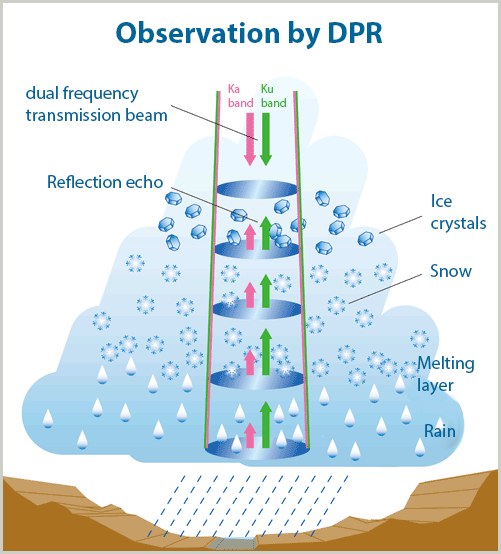Over view of the Dual-frequency Precipitation Radar “DPR”
The Dual-frequency Precipitation Radar (DPR) aboard the GPM core observatory is composed of two precipitation radars (PRs), the KuPR on the Ku-band (13.6 GHz) and the KaPR on the Ka-band (35.5 GHz.)
The KaPR, whose main purpose is to improve sensitivity, is useful for detecting light rain and snow that cannot be measured by the KuPR. Conducting measurements simultaneously with the KuPR, which can detect strong rain, the two radars can observe both strong rain in the tropical zone and light rain and snow in high latitude areas. In general, strength of precipitation echoes is affected by attenuation due to precipitation on those frequencies, but the amount of attenuation depends on the frequency and the size of raindrops.
The KuPR and KaPR, therefore, match their radar beam positions and transmission pulse timings of each other to estimate a size of a raindrop (Raindrop Size Distribution, DSD) by calculating the difference in precipitation attenuations. This information cannot be acquired through only one-frequency radar like the TRMM’s PR, hence the accuracy of precipitation volume estimation will be significantly improved.

